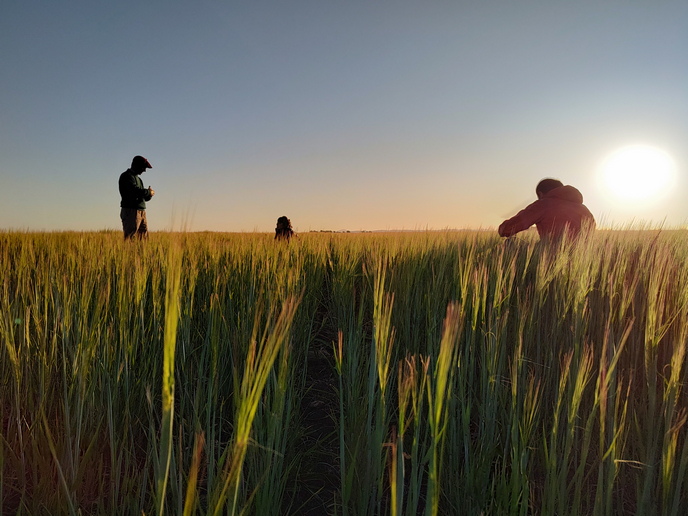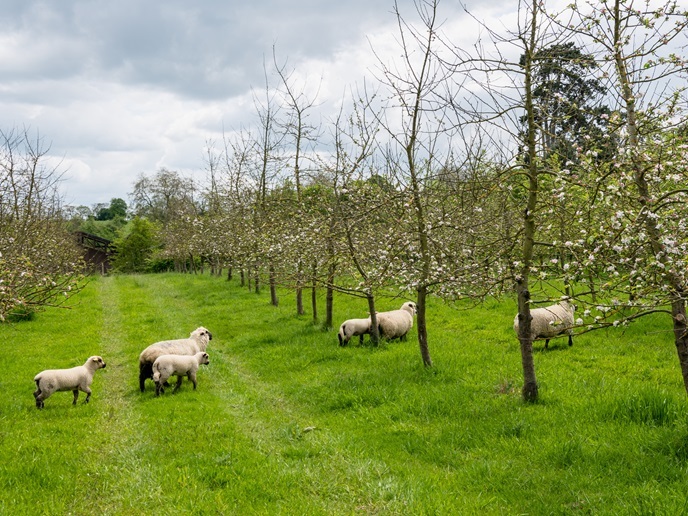Increasing the use of crop diversification across Europe
Today’s agriculture is often characterised by large fields growing a limited number of crops. While this model has helped increase the sector’s economic efficiency, it has also made farming less resilient and increasingly reliant on the use of chemical fertilisers and pesticides. The lack of crop diversity, in combination with the use of fertilisers and pesticides, has often led to high incidences of pests and diseases, soil erosion, loss of soil fertility and pollution, and a decrease in biodiversity. “What was originally meant to support the agricultural sector now threatens its very existence,” says Antoine Messéan, research manager at INRAE(opens in new window), the French National Research Institute for Agriculture, Food and the Environment. “As such, modern agriculture has become unsustainable.” For researchers like Messéan, the solution to agriculture’s sustainability problem lies in diversification. “Crop diversification has the potential to improve agrobiodiversity and support the ecological processes that are necessary for the sustainable production of agricultural products,” he explains. As coordinator of the project DiverIMPACTS(opens in new window) (Diversification through Rotation, Intercropping, Multiple cropping, Promoted with Actors and value-Chains Towards Sustainability), Messéan is leading an effort to increase the use of crop diversification across Europe.
Working together with farmers
As Messéan explains, crop diversification involves increasing crop diversity within a field, both in space and across time. “It means moving away from today’s highly simplified cropping systems and towards diversified cropping systems characterised by longer rotations, the growing of multiple crops, intercropping, or a combination thereof,” he says. Crop diversification offers numerous benefits, including a reduced dependence on fertilisers and pesticides, a more efficient use of resources, and an increase in production and nutrition. “This practice can reduce risks and increase resilience to environmental changes by diversifying one’s income streams, restoring biodiversity and soil quality, and protecting crops against the effects of climate change,” adds Messéan. While the transition to crop diversification may sound straightforward, according to Messéan, it’s easier said than done. “The benefits of this diversification vary depending on local conditions, which means there is no one-size-fits-all solution,” he explains. Messéan says that there’s also a series of technological, organisational and institutional barriers all along the value chains and within the sociotechnical system (policies, education, research, regulation). “Local farmers need to understand the process and be given the support they need to make the transition to crop diversification,” he remarks. This is where the DiverIMPACTS project comes into play. Working hand-in-hand with local farmers and agricultural stakeholders, researchers supported 25 multi-actor case studies(opens in new window) and a number of agroecology field experiments(opens in new window). For example, a case study in Germany looked at how crop diversification can improve water quality stability, while in Romania researchers studied how farmers could diversify cereal-based rotations under adverse conditions. “By codesigning solutions with local actors and assessing the sustainability of crop diversification at different levels, we were able to identify critical points to help develop diversification strategies tailored to local needs while also meeting agriculture’s urgent sustainability needs,” notes Messéan.
Helping farmers make the transition to crop diversification
With the insights gained during these case studies and experiments, the project has developed strategies for farmers and the agri-food sector. They also served as the basis for several policy briefs to help policymakers understand the importance of crop diversification and develop mechanisms to support farmers in making the transition. “The DiverIMPACTS project may be finished, but our work is just getting started,” concludes Messéan. “Leveraging the momentum built during this project, we are now taking what we learned and applying it to other EU-funded projects and initiatives.”







